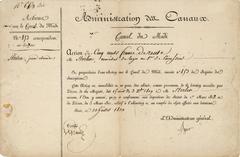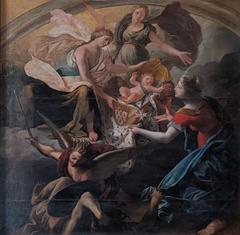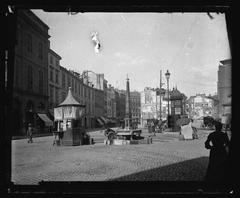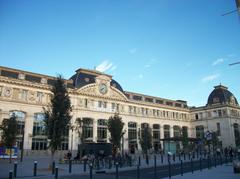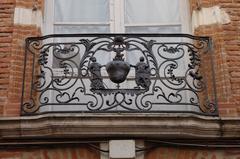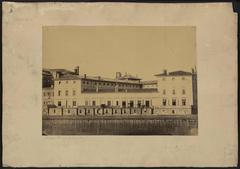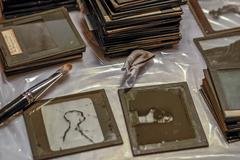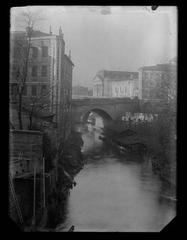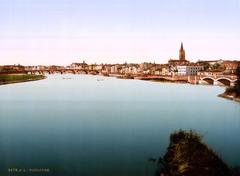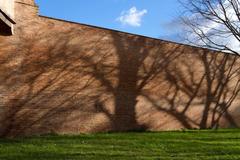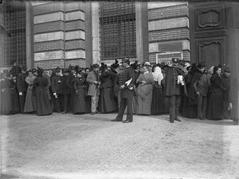Visiting Hôtel du Vieux-Raisin Toulouse: Complete Guide to Tickets, Hours, and Travel Tips
Date: 03/07/2025
Introduction
The Hôtel du Vieux-Raisin, nestled in the heart of Toulouse’s historic district, stands as one of the city’s most exquisite Renaissance hôtels particuliers. Celebrated for its rich architectural heritage, sculptural detail, and layered history, the mansion offers a unique window into the flourishing of Toulouse during the Renaissance. This comprehensive guide will help you plan your visit—covering essential information on its history, architectural significance, visiting hours, tickets, accessibility, and nearby attractions. Whether you are a history enthusiast, architecture lover, or a traveler seeking Toulouse’s cultural gems, the Hôtel du Vieux-Raisin is a must-see destination (official Toulouse tourism website; Wikipedia; Anecdotrip).
Table of Contents
- Historical Overview
- Architectural Features & Artistic Significance
- Visiting Information: Hours, Tickets, and Accessibility
- Travel Tips and Nearby Attractions
- FAQs
- Conclusion and Practical Recommendations
- References
Historical Overview
Origins and Renaissance Transformation
The origins of the Hôtel du Vieux-Raisin trace back to the late 15th and early 16th centuries. Originally, the property included structures from the medieval period, but its transformation into a Renaissance masterpiece began with Béringuier Maynier, a prominent lawyer and capitoul of Toulouse. Starting around 1515, Maynier oversaw the construction of new wings and a courtyard, reflecting the Italian Renaissance style that was then sweeping across southern France. The mansion’s name, “Vieux-Raisin,” comes from a local tavern sign, a nod to neighborhood traditions (Wikipedia; hautegaronnetourism.com).
In 1547, Jean Burnet acquired the property and expanded it further, commissioning decorative elements and architectural innovations attributed to Nicolas Bachelier, a leading Renaissance architect of Toulouse (cityzeum.com).
Artistic Flourish and Preservation
The mansion’s windows, facades, and courtyard are adorned with sculptural details—caryatids, atlantes, mascarons, and medallions inspired by classical antiquity. Latin inscriptions reflect the humanist ideals of its owners. Over time, the mansion underwent further modifications, including 18th and 19th-century adaptations and preservation efforts. It was listed as a Monument Historique in 1889, ensuring its architectural integrity is maintained for future generations (pop.culture.gouv.fr; monumentum.fr).
Architectural Features & Artistic Significance
Façade, Courtyard, and Decorative Elements
- Brick and Stone Construction: The mansion exemplifies the Toulouse tradition of combining pink brick with sculpted stone, notably around windows and doors for visual contrast.
- Sculptural Windows: The windows, especially along rue Ozenne and the inner courtyard, are richly decorated with pilasters, candelabra, and classical motifs. Some windows feature atlantes and caryatids—sculpted figures serving as architectural supports, rare in Toulouse at the time (Anecdotrip).
- Staircase Towers: Two prominent cylindrical staircase turrets frame the courtyard, adorned with medallions depicting classical busts.
- Humanist Inscriptions: Latin phrases above entrances and throughout the mansion reflect the intellectual aspirations of its owners, such as “Vivitur ingenio caetera mortis erunt” (“Only the spirit survives; all else shall die”).
- Courtyard Portico: The courtyard features a portico with coffered ceilings and sculptural details, blending power and delicacy in true Renaissance fashion.
Visiting Information: Hours, Tickets, and Accessibility
Location
36 Rue du Languedoc, 31000 Toulouse, France
Within Toulouse’s historic Carmes district, easily accessible by public transport, bicycle, or on foot (Bigobooking).
Opening Hours & Admission
- Courtyard Access: Open weekdays from 9:00 AM to 6:00 PM.
- Interiors: Not open to the public, as the mansion remains a private residence.
- Admission: Free entry to the courtyard; no tickets required (Metropole Toulouse).
Guided Tours & Events
- Guided tours may be available as part of broader Toulouse Renaissance architecture tours. Check schedules with the official tourism office.
- Occasional cultural events and exhibitions are hosted here—see local listings for details.
Accessibility
- The courtyard is generally accessible to visitors with limited mobility, though some uneven paving may be present.
- Contact tour providers in advance for specific accessibility accommodations.
Travel Tips and Nearby Attractions
Tips for Visitors
- Best Time to Visit: Morning or late afternoon for optimal light and fewer crowds.
- Photography: The façade and courtyard offer excellent photo opportunities; tripods and flash may be restricted.
- Footwear: Wear comfortable shoes suitable for walking on historic stone surfaces.
Nearby Attractions
- Hôtel d’Assézat: Another magnificent Renaissance mansion nearby.
- Place du Capitole: Toulouse’s central square, vibrant with shops and cafés.
- Musée des Augustins: Fine arts museum with Renaissance collections.
- Saint-Étienne Cathedral: A Gothic masterpiece within walking distance.
- Canal du Midi: UNESCO-listed waterway, ideal for a scenic stroll.
Frequently Asked Questions (FAQ)
Q: What are the Hôtel du Vieux-Raisin visiting hours?
A: The courtyard is open weekdays from 9:00 AM to 6:00 PM. The interior is not open to the public.
Q: Is there an admission fee?
A: Entry to the courtyard is free.
Q: Are guided tours available?
A: Guided tours are occasionally available through local tourism offices as part of Renaissance architecture tours.
Q: Is the site accessible to people with disabilities?
A: The courtyard is accessible, but some uneven paving exists. Contact providers for details.
Q: Can I take photos?
A: Yes, photography is allowed in the courtyard. Respect any posted guidelines regarding equipment.
Conclusion and Practical Recommendations
The Hôtel du Vieux-Raisin is a compelling example of Toulouse’s Renaissance legacy, blending exceptional architecture, art, and history. Its sculpted windows, towers, and inscriptions reflect the city’s cultural and economic prosperity during the 16th century. While the interiors are private, the accessible courtyard offers a rare and authentic glimpse into the Renaissance ambiance of Toulouse. For a richer experience, combine your visit with other historic sites nearby, and consider joining a guided architecture tour.
For the latest visiting information and event updates, consult the official Toulouse tourism website. To deepen your exploration, download the Audiala app for guided audio tours and follow social media channels dedicated to Toulouse’s heritage.
References
- Visiting the Hôtel du Vieux-Raisin: History, Tickets, and Toulouse’s Top Renaissance Site
- Architectural Significance: Discover the Hôtel du Vieux-Raisin in Toulouse
- Visiting Hôtel du Vieux-Raisin: Hours, Tickets, and Essential Information
- Hôtel du Vieux-Raisin Wikipedia page
- Barnes Toulouse: Hôtel du Vieux-Raisin article
- Metropole Toulouse

